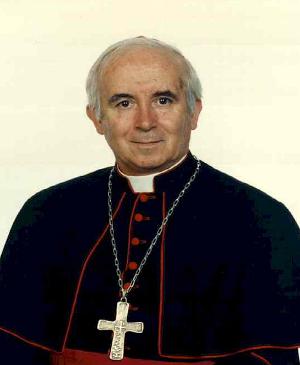Pave Benedikt om messen som offer
Nylig var det en konferanse i USA som tok opp pave Benedikts teologi (les om den her), og en av foredragsholderne har skrevet om det her, og presentert en oppsummering av sitt eget foredrag:
“The Feast of Peace: The Eucharist as Sacrifice and Meal in Benedict XVI’s Theology,” by Kimberly Hope Belcher, presented at the Notre Dame Institute for Church Life Conference “God is Love: Explorations in the Theology of Benedict XVI” on March 27, 2012. To be published with Notre Dame Press, 2012.
Abstract: In Pope Benedict XVI’s theology, the Eucharist is a sacrifice because it is the sacrifice of the cross, made accessible to human beings forever through the eucharistic prayer. It is also a meal, however, precisely because the divine sacrifice completes itself in a community meal that also obliges Christians to ethical service and communal love.
Part 1: Meal and Sacrifice in Benedict XVI
Although Benedict expressed deep concern about calling the Eucharist a “meal” in earlier reflections, in his papal works on the Eucharist, especially in Deus Caritatis Est and Sacramentum caritatis, he uses meal imagery for the Eucharist much more positively.
Part 2: Love and sacrifice
For Pope Benedict, sacrifice has an essentially positive definition that is often overlooked or misunderstood. The sacrifice of the mass, in particular, is grounded in Christ’s sacrifice on the cross and ultimately in the trinitarian love. To participate in the Eucharist, then, is to participate in this trinitarian love offered as our salvation, not to offer a work of human merit to a hostile God.
Part 3: Feast of peace
Given this understanding of the sacrifice of the Eucharist, its meal dimension can be seen as the necessary completion of God’s sacrificial self-giving to humanity in incarnation, passion, and resurrection. The meal dimension of the Eucharist highlights the completion of Christ’s sacrifice in the gathering of his new body, the church, and is also the consummate icon of God’s self-revelation in all creation as beauty.
På nettstedet PrayTell er det også en interessant samtale om dette temaet.

 Sist søndag presenterte kardinal Antonio Cañizares Llovera, prefekt for Liturgikongregasjonen, en bok skrevet av Msgr. Guillaume Derville, kalt «La concélébration eucharistique. Du symbole à la réalité».
Sist søndag presenterte kardinal Antonio Cañizares Llovera, prefekt for Liturgikongregasjonen, en bok skrevet av Msgr. Guillaume Derville, kalt «La concélébration eucharistique. Du symbole à la réalité». Slik starter tredje hoveddel av boka «The Mass and Modernity»
Slik starter tredje hoveddel av boka «The Mass and Modernity»  Kardinal
Kardinal 